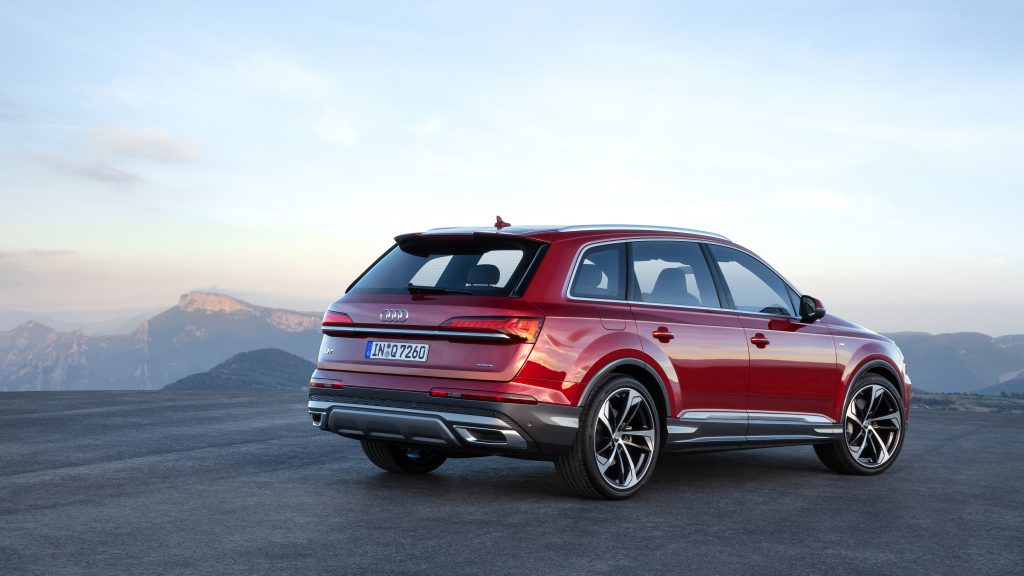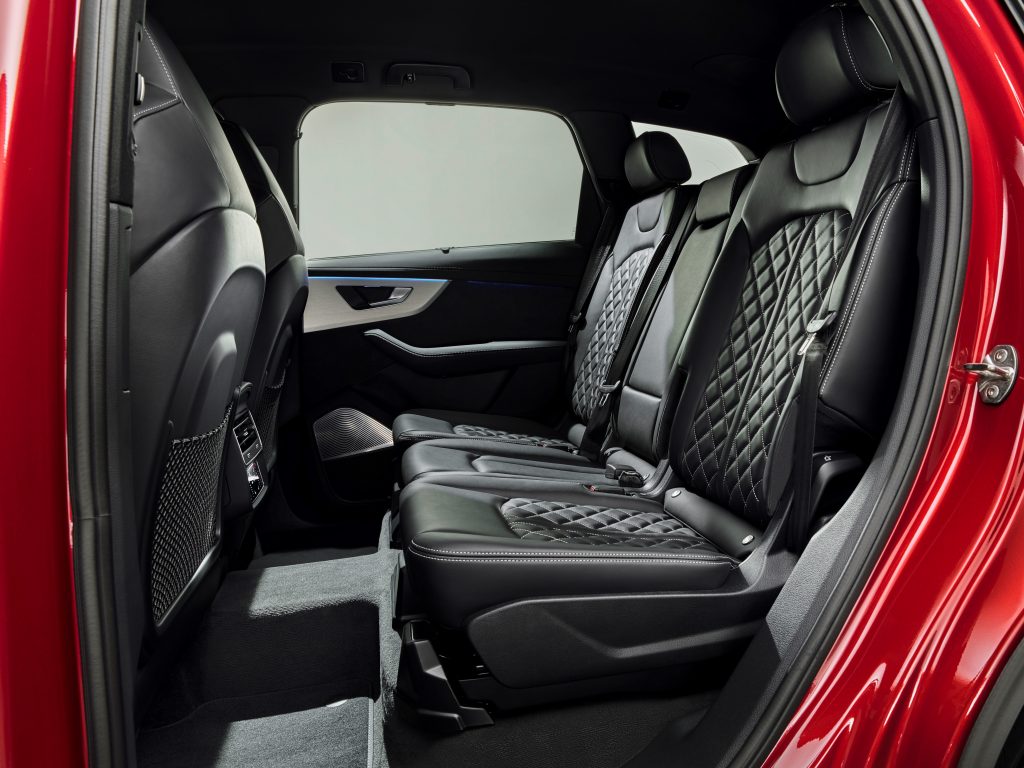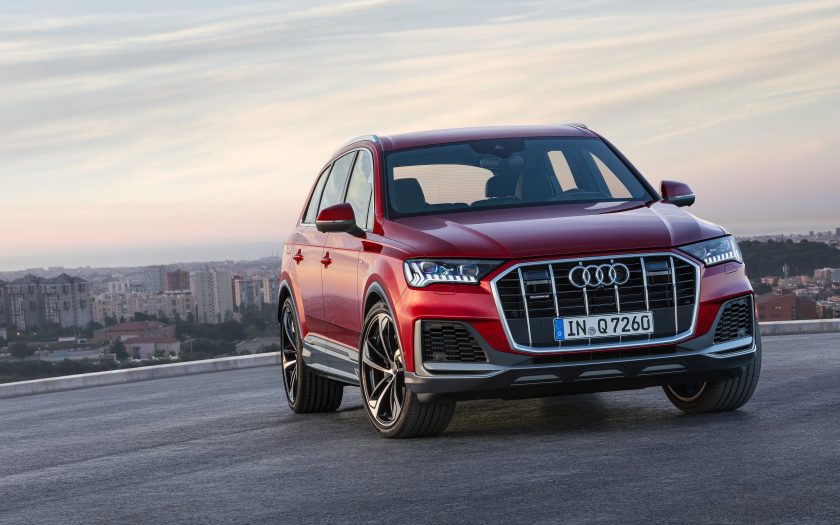WHEN WE FIRST experienced the Audi Q7 it was 2006. The company created an epic drive from Sydney to Broome, 7000km in 21 days, across some of the toughest and most unforgiving roads Australia can dish up.
The Ingolstadt project manager came along for the ride, as did the then-CEO of Audi Australia. Neither of them had any concept of the immensity of the challenge they were taking on. And none of the journalists involved believed for a minute that the fleet of Q7s would all make it through unscathed.
Apart from using up the entire Australian stock of the appropriate-sized tyres, they (and we) all made it through to Broome. It was an impressive debut.
At the time, the Q7 felt huge.
Since then, of course, it seems all vehicles have grown bigger and heavier and today, the Audi Q7’s size has come to feel more normal, to the point where it is dwarfed by some of the bigger crew cab utes. And it has continued to impress.
Now, the Audi Q7 is getting another update – both visually and technically.
The large SUV features the new design of the Q family and offers improved dynamics and comfort. Mild hybrid technology, the digital operating concept and the optional HD Matrix LED headlights including laser light are just some of the highlights that we’ll see when the new Audi Q7 arrives in Australia in the first half of 2020.

Updated exterior design
The Audi Q7 naturally enough follows the prevailing Audi design parameters: large octagon-shaped grille, with six upright slats; two-part side air inlets; headlights, optionally in HD Matrix LED technology with Audi laser light; a striking chrome strip across rear to create a visual connection between the flat rear lights. The designers achieved the clear view with taut, flat surfaces, which span the entire width particularly around the license plate. The Audi Q7 is even more striking with the optional S line exterior. A blade in the front bumper, accentuated underbody protection at the rear along with full paint finish and 19-inch wheels come as standard.
Sporty on-road, powerful off: the suspension
Audi has substantially enhanced the dynamic attributes of the Q7. The electromechanical active roll stabilisation is available as an option.
Adjustable stabilisers reduce the body movements on uneven roads when driving in a straight line. For more spirited driving, the focus is on optimum roll compensation and the tendency of the car to lean into the bend is reduced substantially.
All-wheel steering is also optionally available. The rear wheels turn by up to five degrees in the opposite direction at low speed, which increases agility, while on the highway these wheels steer slightly in the same direction to promote stability.
Thanks to the combination of these high-tech systems, the Audi Q7 is extremely manoeuvrable, precise and agile in urban traffic and on hairpin bends. The Q7 behaves as a highly comfortable, poised touring SUV with excellent ride comfort on freeways – particularly in conjunction with the adaptive air suspension. It also provides variable ground clearance and prepares the Audi Q7 with its standard quattro drive for terrain off the beaten track. The appropriate off-road mode can be selected via the Audi drive select dynamic handling system with its seven profiles. Air suspension comes standard on all seven-seater Q7 models, while the S line exterior includes the slightly firmer adaptive air suspension sport, which lowers the ride height by 15 millimetres compared with the regular air suspension system.
Mild hybrid technology standard: the drivetrain
All engines in the Audi Q7 are coupled to an eight-speed Tiptronic and permanent all-wheel drive. A choice of two diesel engines will be available at launch. Shortly after, a petrol unit, followed by a plug-in hybrid model, will join the line-up.
The standard mild hybrid technology can reduce consumption by up to 0.7L/100km. Its central component, the belt alternator starter (BAS), powers a 48-volt main electrical system in which a compact lithium-ion battery stores the energy. During braking, the BAS can recover up to 8kW of power and feed it back into the battery. If the driver takes his/her foot off the accelerator at speeds between 55 and 160km/h the Audi Q7 recuperates energy, rolls in idle or coasts for up to 40 seconds with the engine switched off. The BAS restarts the engine the next time the accelerator is depressed, and does so faster and more gently than a conventional starter. The start-stop range begins at 22km/h.
The interior: first class lounge
The Audi Q7 has grown eleven millimetres to 5063 millimetres long. It measures 1970 millimetres wide and 1741 millimetres (including roof aerial) high. The Audi Q7 outdoes its direct competitors with interior length as well as headroom and elbow room in the front and rear. There is a host of storage compartments, a new compartment in the instrument panel plus generous load capacity. Depending on the position of the rear seat backs the luggage compartment on the five-seater version offers between 865 and 2050 litres of capacity – the latter with a flat load area. An electric tailgate is standard with a foot-activated gesture control available as an option. Audi also offers the clever rear seat Bench Plus (optional), where all three seats can be moved individually fore and aft and the backrest angle adjusted, as well as a third seat row with two electrically lowerable seats.
The cockpit architecture harmonises with the new, digital operating concept, incorporating two large touchscreens. They provide haptic and acoustic feedback when clicking on the touch controls. When off, the top display slots almost invisibly into the large black decorative surface. All elements relate logically to one another, from the flat air vent strip to the wide console on the centre tunnel.
The optional contour ambient lighting package illuminates the interior in the dark and comfort equipment options include four-zone automatic air conditioning, a power-assist function to close the doors quietly, the Bang & Olufsen 3D Advanced Sound System and the air quality package with fragrancing and ionizer. The various seat options include the customised contour seats with their numerous adjustment functions and the S sport seats plus, both available with climate control and massage function.

High-end connectivity: Audi connect and assist systems
The MMI navigation plus delivers top-of-the-line connectivity and features LTE Advanced, a Wi-Fi hotspot, natural voice control and the extensive Audi connect portfolio. The latter ranges from traffic information online, navigation with Google Earth, to the hybrid radio. The cloud-based Amazon voice service Alexa, which is integrated into the MMI operating system, is also new.
The Car-to-X service traffic light information is technology that’s not relevant in Australia, but is being rolled out in stages in selected European cities. Yes, once again we are lagging behind technology advances offered in other markets.Interconnection with the city’s infrastructure allows the vehicle to receive information from the central traffic light computer via a server, enabling the driver to select a speed to match the next green-light phase. The all-digital Audi virtual cockpit – and the optional head-up display – provide an individual speed recommendation as well as the remaining time until the next green-light phase if the driver is already waiting at a red light. The system thus contributes to a predictive and efficient driving style and facilitates a steady flow of traffic.
Adaptive cruise assist combines the functions of adaptive speed assist, traffic jam assist and active lane assist, reduces the driver’s workload – particularly on long journeys. In combination with efficiency assist it brakes and accelerates the Audi Q7 in anticipation of the conditions ahead. The emergency assist is also new: if the driver is inactive, the system brings the car to a stop and initiates protective and rescue measures. This function is active in assisted and manual modes.
Australian information
The new Audi Q7 is expected in Australia in the first half of 2020. Further details on the model line-up, pricing and specification will be announced closer to launch.
Once we have tested and assessed the new Audi Q7, seniordriveraus will bring you a comprehensive review, including everything the over-50 driver needs to know.
